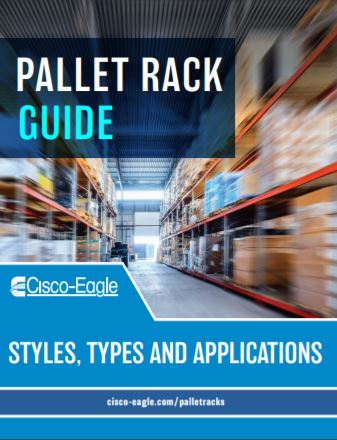Double-Post Pallet Rack Systems: When, Why and How
Most warehouse racks are installed starter-adder
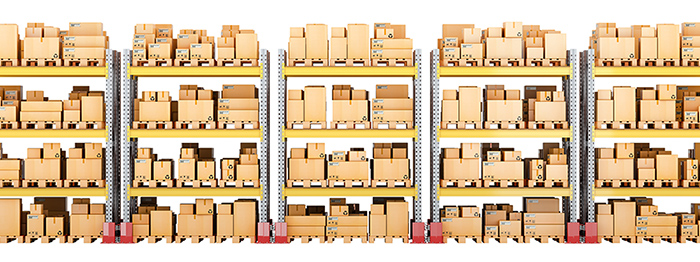
Most pallet rack systems are installed with a starter-adder design, which shares a common rack upright between consecutive storage bays. The alternative is a double-post rack system, where each bay has two independent uprights. Most of the time, starter-adder is used because it’s more economical and uses space more efficiently.
Given that it’s costlier and uses more space, why–and where–would you use a double-post design?
The starter-adder concept
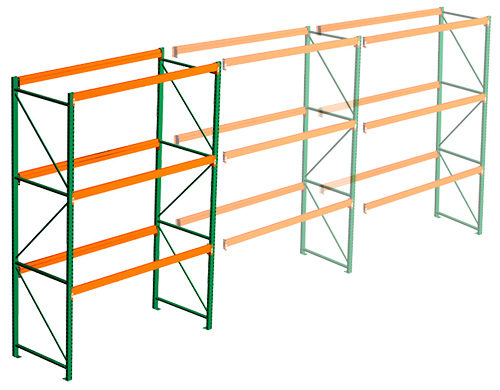
Most warehouses use starters — a single, self-supporting bay — and adders that connect to starters in a row with common upright.
The starter-adder pallet rack design is a modular racking system commonly used to optimize space efficiency and reduce costs. It consists of two main components: a starter unit, which includes two uprights, and adder units, which share an upright with the preceding bay. This shared upright design minimizes material usage while maintaining structural integrity, making the system less expensive and more space efficient.
Dynamic rack systems and double-post configurations
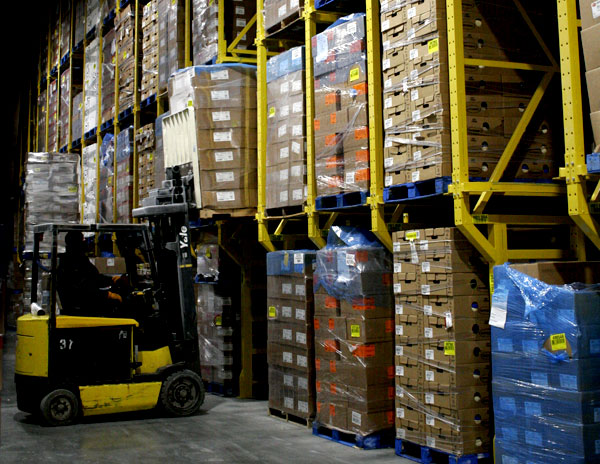
Above: in this drive-in rack system, forklifts must enter the rack structure to pick or place pallets, which means more chances of contact between lift trucks and the rack system
Double post pallet racks are better suited for dynamic rack systems such as drive-in, pushback or pallet flow racks than they are selective applications. You’ll see these systems utilize double posts far more often than selective applications.
Dynamic rack factors
- Increased load stress: Dynamic racks by nature feature loads in motion using gravity or mechanical components. Double posts may lend the extra amount of stability and damage resistance needed for safer unit handling.
- Frequent contact points between forklifts and racks: For instance, a drive-in system requires forklifts to enter the rack structure to place or pick pallets. This results in more contact points and more chances of impacts.
- Heavy-duty loads in motion: When a pallet is picked from a flow system, all pallets behind it simultaneously move forward. This amount of weight in motion benefits from the increased structural integrity of having two posts per lane.
These systems experience more stress and impacts than selective systems. They may require the durability of a double post design. Selective racks don’t usually require the extra strength provided by double posts and prioritize cost-efficiency and accessibility. In many cases they can share uprights due to heavy structural construction.
Above: Jason discusses the critical differences between pushback and drive-in rack systems
Comparing single and double-post designs
| Feature | Double Post Pallet Racks | Starter-Adder Rack Systems |
|---|---|---|
| Load Capacity | Higher; can handle extremely heavy loads | Handles heavy loads, but less weight than double post systems |
| Durability | Double posts are more resistant to impacts and structural damage | Durable, but less robust than double-post systems |
| Cost | Higher due to additional materials | Lower due to shared posts |
| Space Efficiency | Less compact, especially in long rows | More space-efficient |
| Ease of Repair | Individual bays can be repaired or replaced with less disruption | Damage to one bay may affect adjacent bays |
| Customization | Highly customizable and adaptable | Best for linear, scalable designs |
| Safety | Enhanced durability for high-risk environments | Suitable for standard warehouse environments and many high-risk applications |
Space utilization
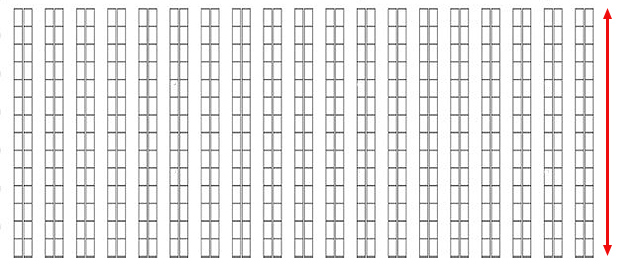
In this layout, with 14 bays per row, a double-post design would require 13 extra frames–and the space each of those occupies–for each row
Starter-adder layouts are a more space-efficient than double-post designs because double-post systems double the number of frames in a row.
- Rack frames are commonly 3″ wide, but 4″ wide posts aren’t uncommon for some types of structural and roll-form racks.
- For longer rows of rack, you could lose enough space that you may eliminate one or two bays that would be available in a starter-adder configuration.
- Since each rack frame must have its own footplate, that space must also be accounted for.
- Those extra frames and footplates add up in a longer rack row.
Double-post systems are mostly used where space is less of a concern than impact resistance and capacity.
Space planning and facility infrastructure factors
In some cases, double-posts are used due to layout considerations, when rows of racks cannot connect to each other (due to a building column or other obstruction). It can also be that the space allowed dictates a row stop and then restart within the warehouse layout. This can be present due to a high-traffic rack tunnel, a change in load types, a change in rack type, or new rack co-existing with previously-installed, but incompatible racks.
Higher capacities and heavy, unbalanced loads
Double posts support heavier loads by distributing weight more evenly across a larger surface area. If you’re storing extremely heavy pallet loads, double-post racks may handle the weight better. A rack engineer can help you specify the rack you need for your loads.
- While double-post designs are heavier duty and can bear more weight, they don’t double capacities.
- Starter-adder systems can hold very heavy loads, and do so safely, but cannot match the capacity ranges of double-post systems.
- Heavy loads that aren’t evenly distributed are another reason you may require a double post system. Unbalanced and point loads are problematic and should always be evaluated by qualified professionals.
- In some cases, seismic codes may necessitate double-post systems, although many modern racks are engineered to seismic standards in starter-adder configurations.
In many cases, the extra posts won’t add enough capacity vs. a starter-adder system to be worth the extra cost and space consumption.
Structural integrity, impact resistance and stability
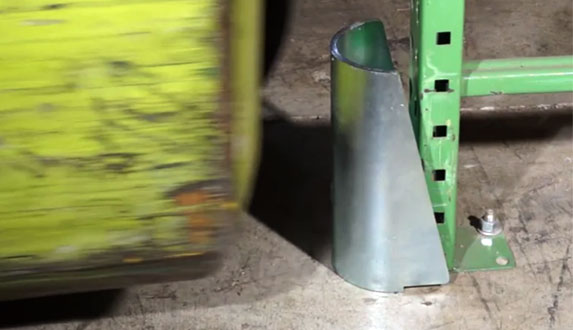
Double-post layouts make the system more robust and less prone to damage from forklift impacts or overloading by adding more posts and more support for each storage bay. A forklift strike could endanger both bays if those bays share a single upright. Entire rows of pallet racks can collapse after a forklift strike to one upright. Double-post configurations don’t guarantee that a forklift impact won’t collapse the rack, but is less likely due to the self-contained nature of each bay.
Also to note: if you install multiple posts, you’ll also need more column protectors to deflect potential forklift impacts.
Double-post systems: higher traffic areas and very tall racks
- Consider double-post systems in your high-traffic areas where the racks are more likely to experience wear and tear. Those racks that experience frequent loading and unloading cycles may justify special protection. For instance, you could store lower volume inventory in the less costly, denser starter-adder areas of your warehouse, while you store fastest movers on double-post systems. This lets you match the application to the rack design.
- When it comes to very tall racking systems, you may want the additional support of double-post systems to enhance stability. Double posts help ensure the structure remains secure even under significant vertical and horizontal pressures.
- In some cases, when damaged a rack needs a repair, double-post designs allow you to unload, tear down or repair the bay without affecting surrounding bays.
It’s about your loads, application and risk tolerance
Double post pallet racks are more common for dynamic racking systems such as drive-in, pushback, and pallet flow than for selective rack applications. Double posts provide the necessary reinforcement, improving safety and performance some dynamic racks may need. You rarely see double-post systems used for selective racks, but it’s not out of the question for higher risk, higher traffic applications.
Download our Pallet Rack Guide
Pallet rack enhances your warehouse and improves overall facility performance when correctly specified, laid out and installed for the right load in the right positions. Check out our guide to specifications, styles, accessories and applications with expert tips from our employee-owners.
You’ll find quick, useful information on racks and how you can use them more effectively.
Download the guide today
Scott Stone is Cisco-Eagle's Vice President of Marketing with 35 years of experience in material handling, warehousing and industrial operations. His work is published in multiple industry journals an websites on a variety of warehousing topics. He writes about automation, warehousing, safety, manufacturing and other areas of concern for industrial operations and those who operate them.




